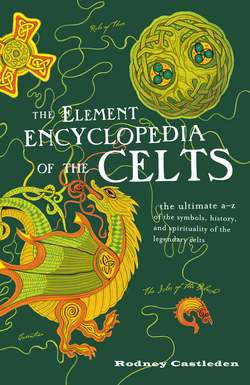Читать книгу The Element Encyclopedia of the Celts - Rodney Castleden - Страница 11
THE NEW VIEW
ОглавлениеBy the 1960s, the nineteenthcentury view was being seriously challenged. There was no real archeological evidence for three major invasions; in fact there seemed to be no evidence of any invasions.
Now we come to an important archeological reality: there was no Iron Age Celtic explosion in the center of Europe spinning migrant Celts off in all directions. This will make an enormous difference to the way we view the modern Celts of the Atlantic coastlands. If those territories on the western fringe of Europe were not invaded by waves of Celtic invaders or migrants in the first millennium BC, the people who live there now are unlikely to be descendants of the central European Celts. This is an idea we will come back to later.
The modern view may perhaps be disappointing to some people. There was not, after all, a pan-European Celtic civilization that was uniform in language, culture, and race: there was no golden age of the Celts. Instead there were many separate autonomous communities—tribes—who exchanged goods, styles, and ideas but remained quite diverse and independent, and their relationships with one another shifted through time. This modern view is based on greater archeological and anthropological knowledge.
The new view is that the prehistoric Celts were essentially two distinct groups: the Iron Age peoples of central Europe and the Iron Age peoples of the Atlantic coastline of western Europe. The Atlantic Celts were more or less stationary, although there was a good deal of trading and other communication among them. The central European Celts, on the other hand, were on the move, migrating south into Italy and east toward Romania and Greece.
A fascinating and exciting aspect of this new approach is the realization that the Atlantic Celts did not arrive in the west as a result of an Iron Age migration in the first millennium BC. They were there already and they had been there for a very long time. Their culture had been evolving over thousands of years. They borrowed or acquired some fashions from the central European Celts, but as a result of contact and trade, not invasion or mass migration. The book will focus mainly on the Atlantic Celts, whose enduring culture was a very long time evolving, though there will be entries about the central European Celts too.
